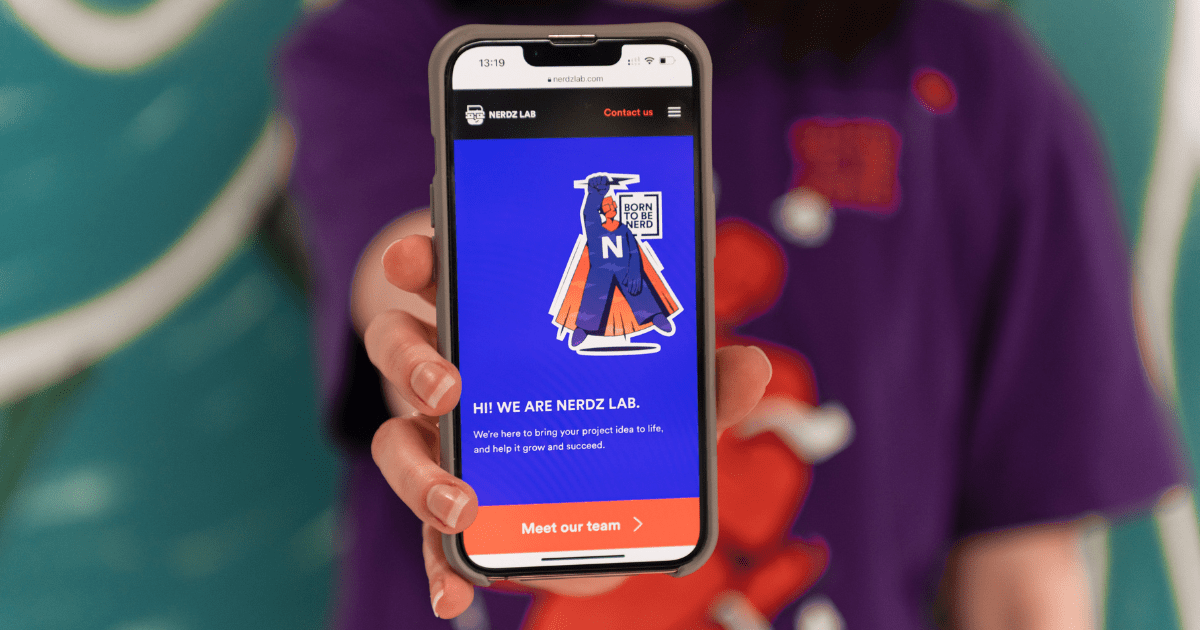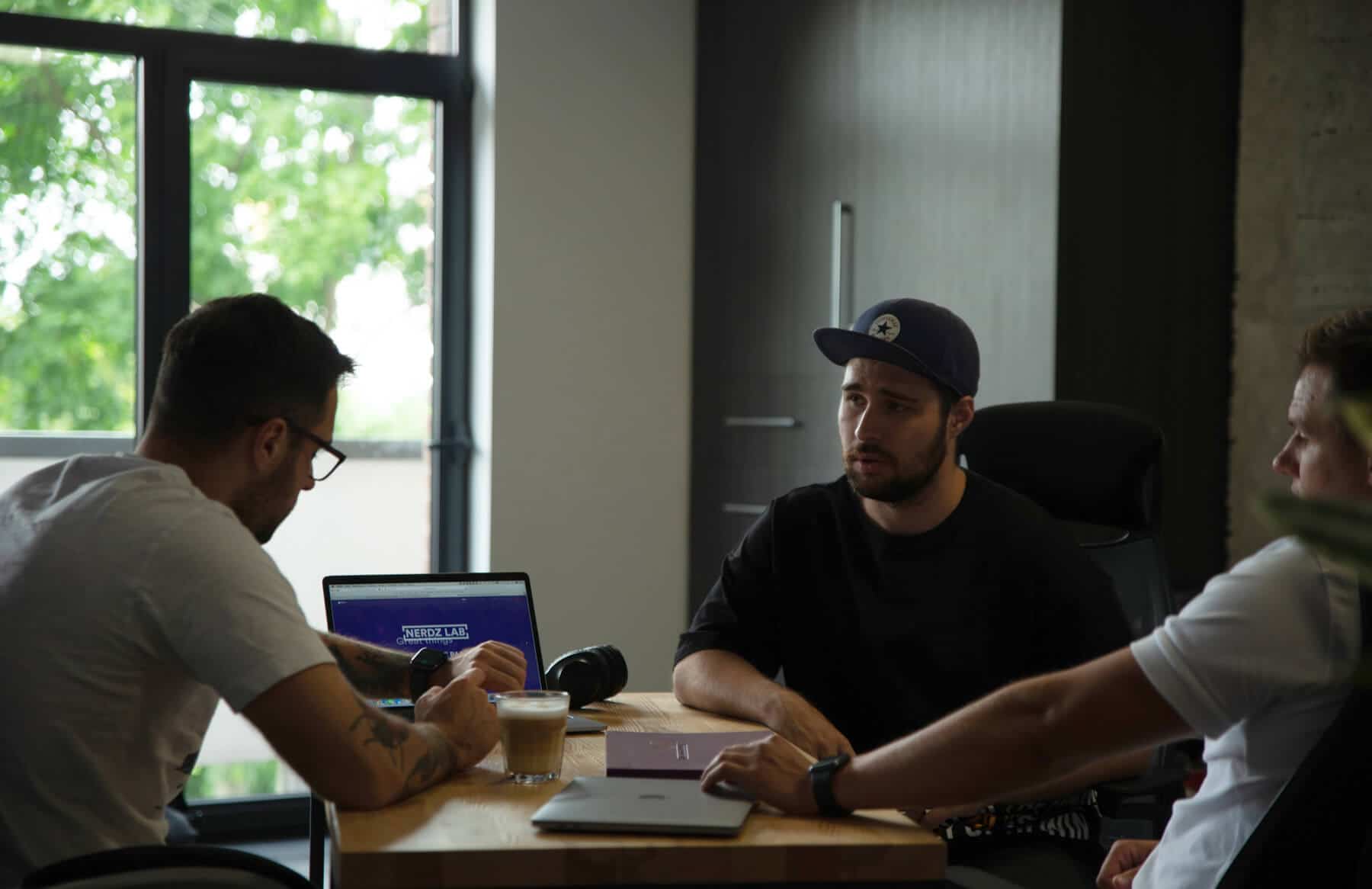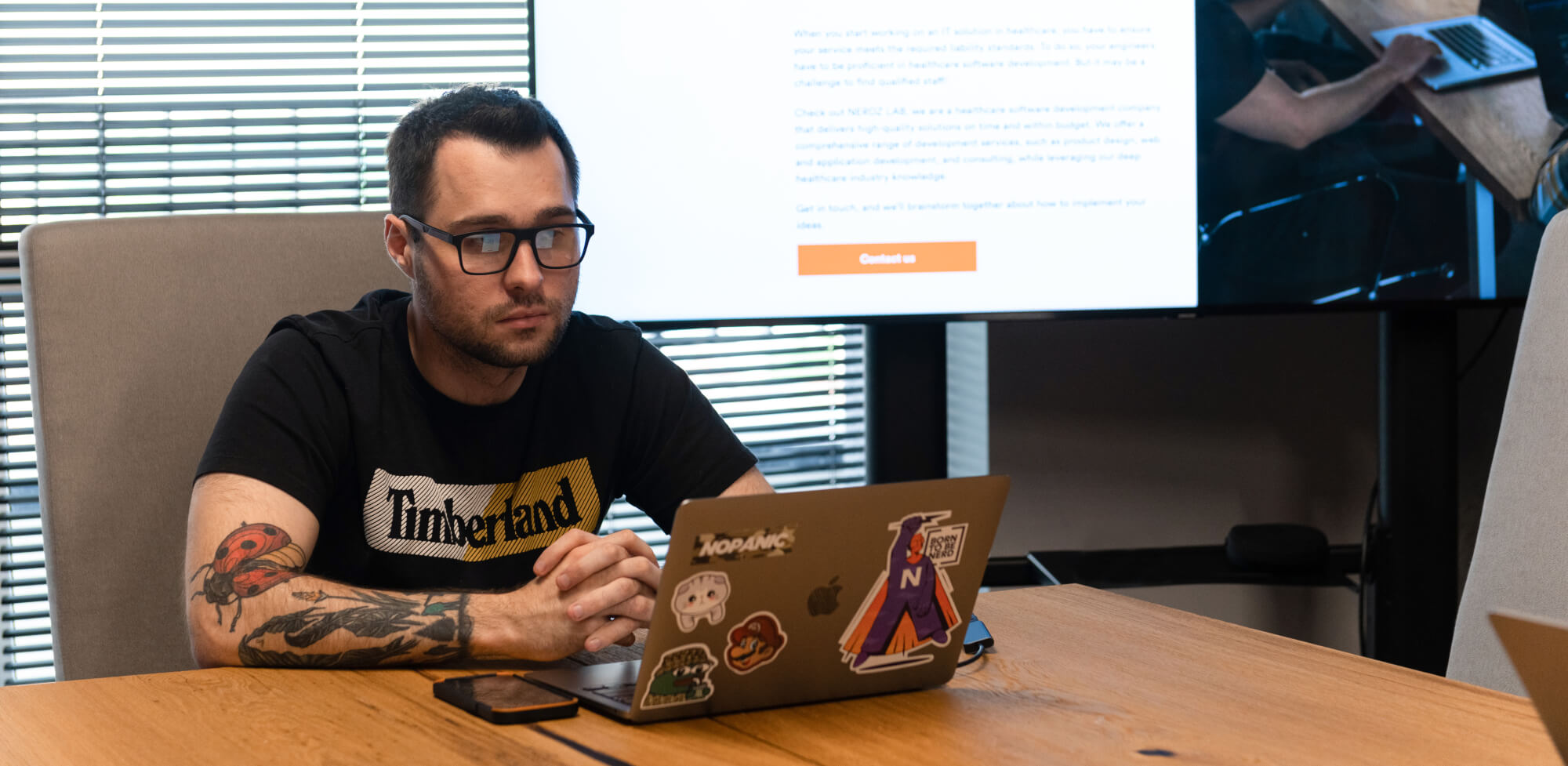От халепа... Ця сторінка ще не має українського перекладу, але ми вже над цим працюємо!

How to get a CTO on board for your startup: Two options to forget, two to remember

Volodymyr Khmil
/
CEO
10 min read
Your startup has everything to crush it — a brilliant product idea, a stellar development team, and startup capital — but no chief technical officer (CTO) to make high-level tech decisions. You consider taking this role yourself or offering it to your best developer or good friend, but a little voice inside your head whispers, “Bad idea.”
If this strikes a chord, then keep reading. I’ll share everything I know about how to find a CTO for a startup, explain what to avoid, and tell you about CTO as a service.
But before we explore your options, let’s discuss the role of a CTO in a tech startup.
Article content:

Why a good CTO is crucial for your startup
You have a general idea of what a CTO does, but you’re still wondering whether you need someone in that role.
My short answer in this situation is yes, you do need someone with the right skill set. In a tech startup, a CTO has the power to bring a company to the highest level or slowly destroy it from the inside.
Sounds a bit dramatic? Maybe, but you’ll agree with me after reading the long answer, which requires digging a little deeper into a CTO’s responsibilities.
Simply put, a CTO is an extremely advanced software engineer with experience in product design who also might go through a business school and serve as an executive.
Relax — of course, I’m exaggerating — it would be almost impossible to find such a superhero. But in fact, I’m exaggerating only a bit because a CTO’s role in a startup is so variable that they need all of those skills to handle their responsibilities, which include:
- Building a strategy to create a solution that fits your business requirements and purpose
- Ensuring the technical viability of your product by choosing the tech stack, and architecture, and making other technological decisions
- Selecting and managing a team of developers
So it makes sense that a CTO should be experienced in every stage and area of product development, from solution design to deployment and support, and from ensuring scalability to cyber security measures. On top of that, a CTO needs management skills.
See also: How to build an MVP for a startup before expanding into a full-scale product
High-level decision-making responsibilities mean a CTO is one of the most influential people in any tech startup. Your investors also understand this. That’s why you’ll definitely get questions about your CTO when raising funds. Who is the CTO, what is their experience, and what motivates them to contribute to your startup’s growth?
Your answer will largely depend on which method you choose to bring a CTO on board. You have four choices:
- Designate one of your top developers as CTO and make them responsible for all tech decisions.
- Hire an experienced CTO with a successful history of running an established company or a startup.
- Onboard your friend who works in a big company like Facebook or Google to curate a development process and make important decisions.
- Hire an external CTO from an outsourcing company, opting for CTO as a service.
Let’s explore each of these scenarios.
Promote a developer to CTO
You don’t need a magic wand to turn a developer into a CTO. You just choose your team’s most skilled and experienced developer, add new responsibilities, and rearrange old ones. For example, now they make major tech decisions and manage product development 70% of their time as a CTO and code 30% as a developer.
Pros of promoting a developer to CTO
This option benefits you in two ways: you save time, and you save money.
You save time because this developer is already on staff and money because you’re already paying them for work. You’ll probably raise their salary to compensate for the extra responsibilities. Still, you’ll also reduce their coding responsibilities, so the raise won’t be as significant as if you hired a CTO. And you don’t have to spend time searching for the right candidate or money to recruit them.
Here’s where the pros end. Let’s move on to the cons.
Cons of promoting a developer to CTO
The disadvantages of promoting a developer to a CTO stem from the developer’s lack of managerial experience and not understanding what skills the role requires.
Lack of a business vision
Developers are usually tech guys oriented to find the best tech solutions. However, the best tech solution isn’t always the best business solution due to its complexity, efficiency, cost, or the business value it brings.
Tech guys rarely take note of these factors and fail to think about finding compromises between the effort required to create a solution and its value for business goals. For instance, when a developer assumes the role of CTO, they might opt to build a custom feature instead of utilizing an existing, off-the-shelf solution, even when the latter would suffice. In non-technical terms, it’s akin to wanting to build a rocket when a simple plane would do.
See also: Security in Android: How to build a safe application
Lack of risk management
Developers rarely think about risks when they’re focused on cool new things they can build. Their eyes light up, and they promote new tools and approaches to development without considering the inherent risks. When developers are just developers, their urge for innovation is great as they can bring a competitive advantage as shiny new things work out pretty well in some cases. But in others, they don’t.
A good example is using the very popular, but still new, React Native for mobile apps. Facebook and Airbnb were among its early adopters, but later, they had to entirely rewrite their apps with a native solution that was more sustainable.
That’s why a CTO has to estimate risk before making decisions and leave developer enthusiasm behind. “Is this solution proven by time? Does it have sufficient community support? What will happen if this tool shuts down or won’t be usable when the project extends its functionality?” These are some of the questions a CTO must consider. A developer with great ideas but without risk management skills will probably miss them.
Narrowly focused expertise
As a rule, developers are experts in several stages of product development that allow them to complete their work but have little to no knowledge in other stages and areas. And this is perfectly logical when you have a whole team of specialists to cover project tasks.
In contrast, a CTO needs to know everything. No, not if the chicken came before the egg, but product design, development, DevOps practices, cybersecurity, quality assurance, and all other areas required for the project. If they were proficient in just one area, one part of a project would be properly managed while others would be a disaster.
So, by choosing this option, you might end up exchanging a top developer’s expertise for an inexperienced CTO. Business-wise, this exchange is inefficient; the developer brings more value working in their position than if they were promoted to CTO.
Unless, of course, you’re lucky and have a perfect candidate for promotion from developer to CTO with all the needed skills. In this case, this option is perfect for you. If you have any doubts, though, why risk the whole project when you have other options to find a CTO?
See also: Implementing Apple Search Ads: what it is, why you need it, and how to get it done
Hiring an experienced CTO
Big, established companies frequently use this option, but it isn’t very popular among startups. You’ll see why in a moment, but first, let’s consider the benefits of hiring an experienced full-time CTO.
Pros of hiring an experienced CTO
By hiring an experienced CTO, you’ll get someone with all the required skills and, most importantly, the experience to handle any issues that arise with your team, your investors, and other stakeholders.
Still, a few major cons stop startups from hiring full-time experienced CTOs.

Cons of hiring an experienced CTO
Can you guess what the first con is?
Prohibitive hiring cost
An average CTO’s salary in the US is over $320,000 a year, but it can reach up to $582,000. What startup can afford that? Even if yours can, don’t jump in because there’s another negative.
Low time-money efficiency
The CTO of a big company always has plenty of work to fill their day and often even more than that. Small startups usually don’t have enough work for a full-time CTO, and an experienced CTO is unlikely to want to work as a developer or an errand guy in their spare time.
In the end, you’ll not only spend a significant chunk of your budget on one person, but you’ll be paying for more time than the work would take.
Can you avoid the cons but leverage the pros of this option? Yes, and I’ll tell you how a bit later. But first, let’s discuss the option of inviting a friend to be your CTO, which I strongly discourage.

See also: Native iOS or cross-platform development with Flutter: strengths, weaknesses, and business specifics
Inviting a friend to be CTO
Startups that opt for this approach and subsequently fail are all too common. It works like this: startup founders don’t have a developer to assign as CTO and don’t have a budget to hire one. They think then, “Hey, my friend is a great specialist working for Google/Facebook/Amazon. They can be a part-time CTO for my startup. What a brilliant idea!” No, it’s not.
In fact, it’s the worst option, and here is why.
Pros
None!
Cons of inviting a friend to be CTO
Note that I’m not even discussing any pros for this option, as there are none. Meanwhile, the cons are serious enough to prove my point.
Severe lack of enthusiasm and engagement
From my experience, friends invited from big companies won’t care enough. They have their main slow-paced, well-paid job, which will always be their priority over your startup.
What’s more, they’re used to this slow pace in an environment where completing one task a week is normal. When they find themselves in a fast-paced startup environment, they can’t cope or adapt. They’ll insist on super long conversations, won’t have enough time to manage even essential issues, and could take days to respond.
Most times, after a few weeks or months of trying to make it work, they leave, and you need to find a new CTO.
Tunnel vision
Engineering experts who work in a big company often have a narrow area of expertise in a very specialized niche because they have worked on a piece of a project for years. They become extremely adept specifically in that niche.
This means as CTO, your friend can bring enough expertise and attention to only one specific part of your project, while decision-making for other parts can resemble reading the tea leaves.
The worst thing about the whole I-work-in-a-big-company situation is your friend believes they know better than other executives how your startup should work. In fact, approaches that work for big companies rarely fit startups.
I hope I’ve warned you away from this option — I’d rather work without a CTO than choose this scenario.
Inviting a friend might work only if they’re as interested in your startup’s success as you are, but in this case, they’ll probably want the role of technical co-founder rather than part-time CTO.
Finally, let’s consider one final option that suits most startups.
See also: 5 ways to eliminate security threats in iOS app development
Choosing CTO as a service for startups
Before discussing the pros and cons, let’s answer two questions: “What is a fractional chief technology officer (CTO)? And how do they relate to CTO as a service?
A fractional CTO is a freelance CTO who provides service to companies only when needed. These specialists often work with a particular IT or outsourcing company that provides CTO as a service and vet applicants to ensure they have all the required skills.
It works like this: you reach out to a company, NERDZ LAB is an excellent example, explain your requirements, and the company finds you a perfect candidate for the role of CTO from their worldwide pool. This service brings you numerous benefits.
Pros of a fractional CTO
In my humble opinion, the following benefits are hard for any other option to beat.
An experienced CTO
You receive all the perks of hiring a CTO with proven experience providing services for startups. Yes, as this service is mostly popular among small companies taking their first steps in a market, your CTO will be the most skilled in handling the challenges startups face. Believe me, this hands-on experience is golden when you must go through all stages of software development, from fundraising to a release for the first time.
Affordable
Using CTO as a service allows flexible resource usage. It offers a CTO on demand — you pay only for hours you need them. If you need two hours a day, you pay only for that time.
No employer obligations
The essence of CTO as a service is that you pay for a service, not an employee. That means you avoid all employment-related costs, like benefits, sick leave, health insurance, and employment taxes. What’s more, you have no obligations to the CTO — you can replace them, pause their work, or increase their workload whenever needed.
Access to a global talent pool
Providers of CTO as a service can search worldwide for a candidate that fits all your requirements rather than choose from a limited pool of available specialists in your location. This advantage is particularly significant if your CTO can reside in any country and work remotely. This benefits you because hiring offshore usually helps you reduce spending, as CTO consulting rates differ around the globe.
The only con of this scenario is that a fractional CTO can’t serve forever. As your startup grows, the CTO acquires more responsibilities and must be involved in all processes round-the-clock. At some point, an in-house CTO becomes the only possible option because the amount of work and responsibility requires them to be 100% focused on the startup in a full-time position.

Check out Mafia&Co case-study where we`ve provided fractional CTO services>
The bottom line
Even though you can see that I prefer one option over the others, I hope my insights will help you find the perfect CTO. In my honest opinion, CTO as a service is the best way for a small startup to get a CTO on board without sacrificing your budget, quality of the work, or even friendship.
NERDZ LAB knows it for sure, as we helped healthcare, e-commerce, media, and e-learning startups bring their visions to life. If you want to join the list of successful startups, book a meeting to discuss your project.






